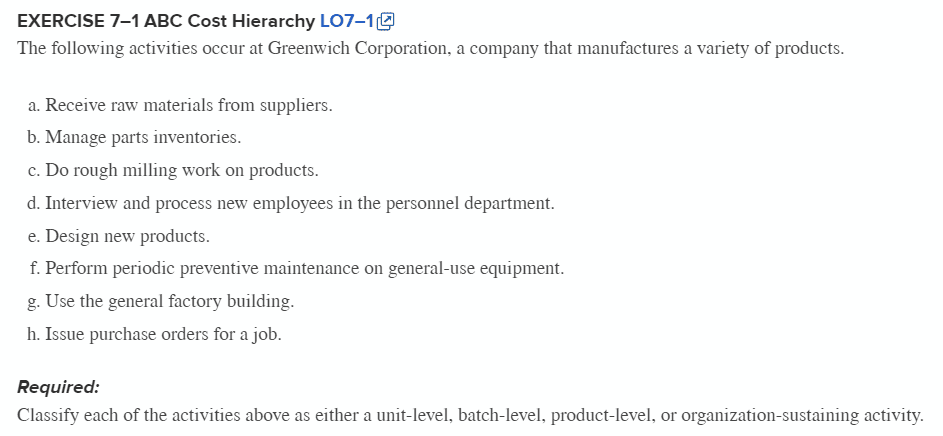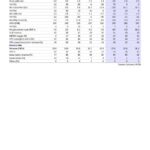
To keep your business running smoothly, you need access to cashflow all the time, and making sure your accounts receivable are paid on time is critical to managing cash flow efficiently. When evaluating accounts receivable automation software, businesses should look for options that reduce the manual efforts involved in managing unpaid invoices, late payments, and bad debts. It should automate tasks such as sending payment reminders, generating invoices, and facilitating online and digital payments. Another reason, accounts receivables are one of the key sources of cash inflow and given the volume of credit sales, a large amount of money gets tied-up in accounts receivables. This simply implies that so much of money is not available till it is paid. If these are not managed efficiently, it how many days after a month ends should the bank reconciliation be done has a direct impact on the working capital of the business and potentially hampers the growth of the business.
Nature of Receivable Management
Another receivables ratio is the number of days’ sales in receivables ratio, also called the receivables collection period—the expected days it will take to convert accounts receivable into cash. A comparison of a company’s receivables collection period to the credit terms granted to customers can alert management to collection problems. Both the accounts receivable turnover ratio and receivables collection period are covered, including the formulas for calculating the ratios, in the previous section of this chapter.
What are the impacts of accounts receivable on the financial statements?
- Furthermore, accounts receivable are classified as current assets, because the account balance is expected from the debtor in one year or less.
- If receivables are not managed efficiently, they will result in bad debts, which will lead to losses.
- Trade accounts receivable that arise from ordinary sales are usually collected within a year or the operating cycle and thus are classified as current assets.
- Receivable management help in organising better credit facilities for their customers.
- Receivable management increase the sales and the profitability of the organisation.
- All companies should use the accrual basis of accounting to create their financial statements.
This ratio tells you how many times you’re collecting your average accounts receivable balance. A higher ratio means that a company is collecting its receivables more quickly, which is a good thing. Finally, legacy applications used in accounts receivable management are often time-consuming and labor-intensive.

Understanding Accounts Receivable (AR)
Accounts receivable (AR) is an accounting term for money owed to a business for goods or services that it has delivered but not been paid for yet. Accounts receivable is listed on the company’s balance sheet as a current asset. Incoming cash can’t be utilized by the company until it has been properly assigned, so effective and timely cash application is an essential element of any accounts receivable management. Receivable management monitors and control all cash movements of organisations. Receivable management helps business in deciding appropriate investment in trade debtors.
It reduces investment in receivable by ensuring optimum funds are available within organization at all the times. Receivable management decides proper credit limit and credit period for avoiding any bankruptcy situations. the 7 most common types of errors in programming and how to avoid them Attempts are made to collect account receivable as soon as they become due for payment which reduces the overall investment in receivables. Receivable management focuses on efficient and timely collection of business payments from its customers. It works towards reducing the time gap in between the moments when bills are raised and payment is collected. By lending credit, it supports financially weaken customers who can’t purchase business products fully on a cash basis.
Scope of Receivable Management
When a credit card is accepted, it means that the credit card company (e.g., VISA, MasterCard, or American Express) will guarantee the payment. The cash will be deposited in the merchant’s bank account in a very short period of time. To recognise an expense before cash is paid, businesses increase the accounts payable balance. In a similar—albeit exact opposite—way, firms increase accounts receivable when revenue is earned before cash is received. Trade accounts receivable that arise from ordinary sales are usually collected within a year or the operating cycle and thus are classified as current assets.
Being proactive about collecting payments is a key part of accounts receivable management. Start by providing clear communication channels for who qualifies for coronavirus paid sick leave under new law customers to ask questions about invoices or payments. It is obvious that sound receivable management will help business owners keep their cash inflow steady.
Using automation will reduce the risk of errors, and recurring invoices can be processed in far less time. Emailing invoices, and providing an online payment option, encourages customers to pay immediately, which speeds up the cash collections. Best of all, invoice automation makes the buying process easier, and improves the customer’s experience with your company. Net credit sales means that all returned items are removed from the sales total.
All such dues from your parties will be your outstanding receivables. Customers with low credit risk are approved; the decision is based on an effective analysis of creditworthiness. The cash is received in April, but the revenue is correctly recorded in March.
